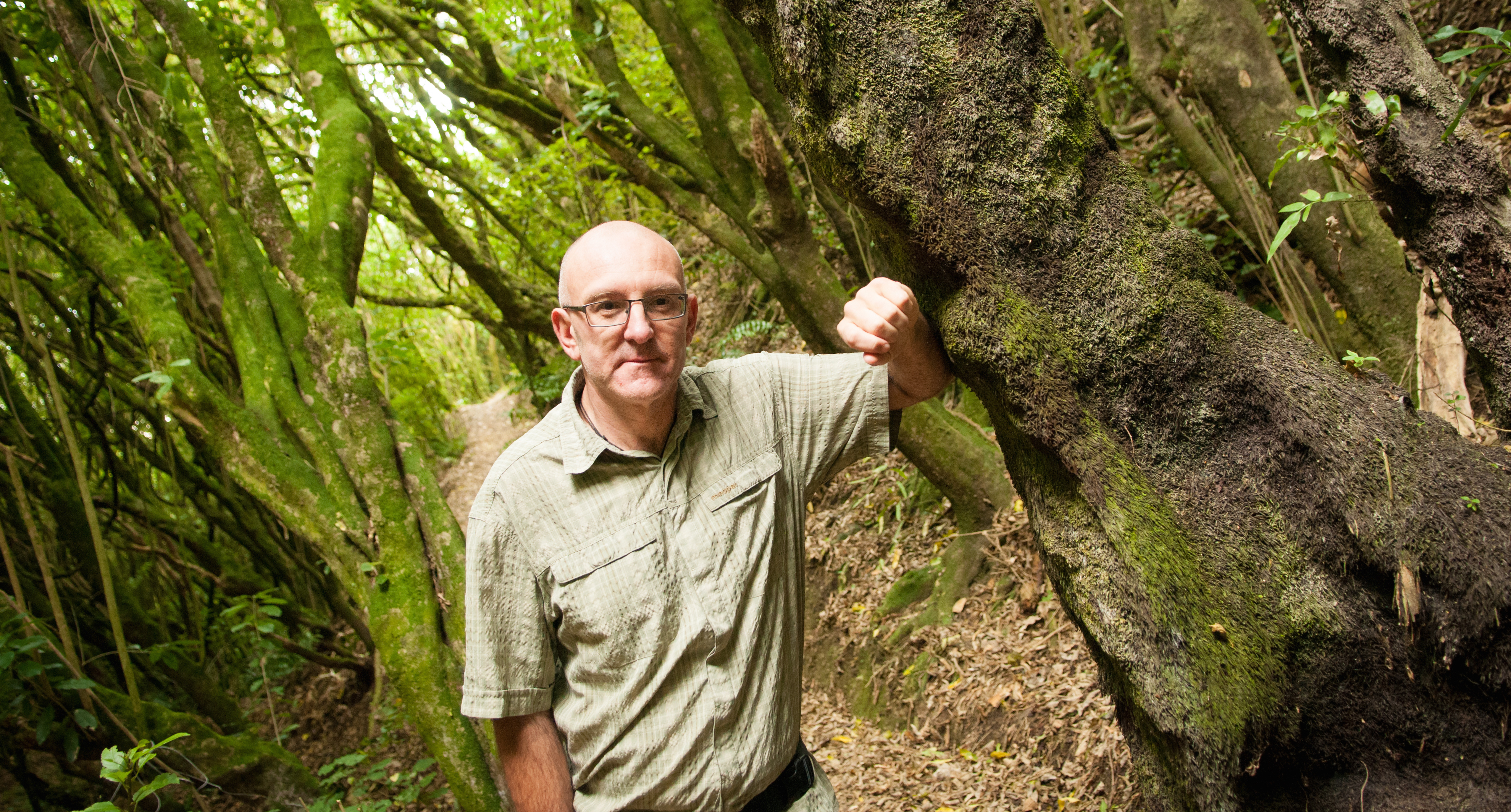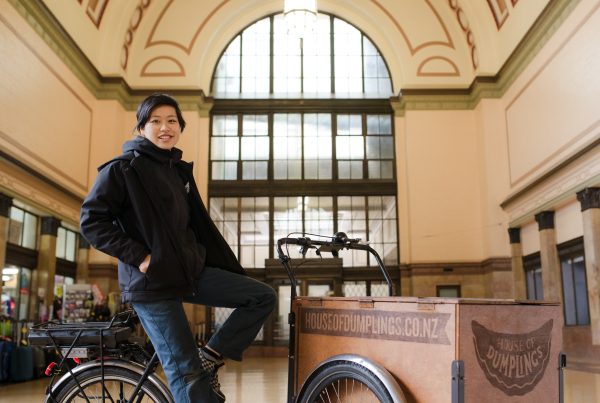
Standing on the path that sits just below the nesting site, Marc Slade embodies the desire to ensure that this wonderful story is no one-off. He leads the Polhill Restoration Project, a group of volunteers who — with Wellington City Council support and funding — are trapping and monitoring predators in the area. Among other good works, they set up a ‘ring of steel’ around the saddleback nest, a series of traps designed to catch stoats, weasels, rats and — Beatrix Potter lovers look away — hedgehogs.
Slade, who lives in Brooklyn Heights, on the edge of the reserve, got involved thanks to that cute and curious ground-hopper, the North Island robin. “One day we saw a robin in our back garden hopping along the side of the raised bed. I did a double-take. I suddenly thought, these buggers are going to get in trouble with predators.” So he advertised for volunteers to help him with trapping, got “massive” interest, and off he went.
Slade is British originally but has lived in Wellington longer than any other city. A policy and planning consultant, but botanist by training, he’s “obsessed” with our native trees. “Look at those fuchsias,” he says, pointing to some fine specimens. “I think they just blaze, like flames…” But at the moment, he can’t focus on the trees too much. It’s all about the traps — and the chew cards, which are just bits of plastic with peanut butter smeared into the cracks. Pulling a handful of them out of his bag, he explains how you can tell who’s in the area from the tiny predator bites the cards bear. Stoats leave pinpricks with their sharp front teeth; possums nuzzle with their gums. “The cards do require some interpretation,” he says, cheerfully, “but once you get your eye in…”
Slade has grand plans for the future. He foresees a reserve restored to a vast forest cloaking the hillsides, mighty trees emerging through the canopy, the air cacophonous with birdsong. There could be kākāriki, kōkako — even kiwi. And why not? So many species are spilling over from Zealandia — not least the saddleback — that it all seems possible.
The saddlebacks, however, will definitely need someone to look after them. Like so many of our native birds, they’re perfectly designed to flourish in an environment with no predators. In the modern world… not so much. They don’t fly well, they tend to nest near the ground, and — according to Wikipedia, anyway — their fledglings “leave the nest to hop around in a typically noisy fashion on the ground while they build up strength in their wings”. To which the typical stoat says: yum. “That’s why they are so vulnerable,” Slade admits. So they’re not really helping themselves, are they? “No. But it isn’t their fault.”
Fortunately, saddlebacks do sometimes survive, even in the wild. Last year’s historic breeding pair produced two chicks: one of them vanished, but the other has made it into 2015 alive, albeit having at one point lost its tail feathers to a predator. (The feathers are, happily, growing back.) Not that we should assume that an introduced animal was to blame. The remains of another saddleback were recently found in the reserve — “and the conclusion was that it probably was a falcon or a morepork that killed it,” Slade says. “It just shows you.”




